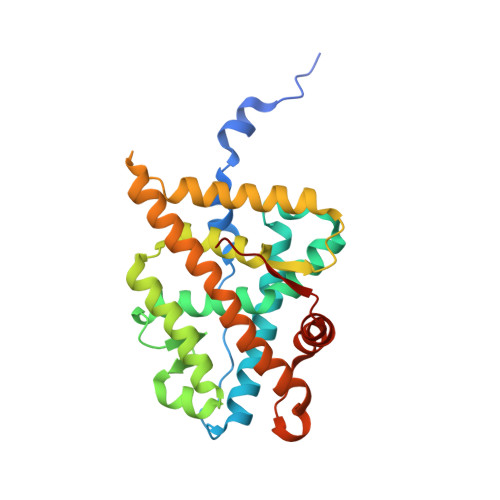A Ligand-mediated Hydrogen Bond Network Required for the Activation of the Mineralocorticoid Receptor
Bledsoe, R.K., Madauss, K.P., Holt, J.A., Apolito, C.J., Lambert, M.H., Pearce, K.H., Stanley, T.B., Stewart, E.L., Trump, R.P., Willson, T.M., Williams, S.P.(2005) J Biol Chem 280: 31283-31293
- PubMed: 15967794
- DOI: https://doi.org/10.1074/jbc.M504098200
- Primary Citation of Related Structures:
2AA2, 2AA5, 2AA6, 2AA7, 2AAX, 2AB2 - PubMed Abstract:
Ligand binding is the first step in hormone regulation of mineralocorticoid receptor (MR) activity. Here, we report multiple crystal structures of MR (NR3C2) bound to both agonist and antagonists. These structures combined with mutagenesis studies reveal that maximal receptor activation involves an intricate ligand-mediated hydrogen bond network with Asn770 which serves dual roles: stabilization of the loop preceding the C-terminal activation function-2 helix and direct contact with the hormone ligand. In addition, most activating ligands hydrogen bond to Thr945 on helix 10. Structural characterization of the naturally occurring S810L mutant explains how stabilization of a helix 3/helix 5 interaction can circumvent the requirement for this hydrogen bond network. Taken together, these results explain the potency of MR activation by aldosterone, the weak activation induced by progesterone and the antihypertensive agent spironolactone, and the binding selectivity of cortisol over cortisone.
Organizational Affiliation:
Department of Gene Expression and Protein Biochemistry, GlaxoSmithKline, Research Triangle Park, North Carolina 27709, USA. [email protected]
















